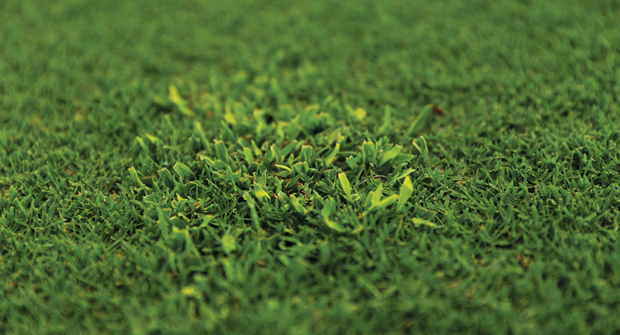
A lawn care operator needs to be somewhat of a magician to deal with crabgrass. Why? Because it needs to be treated before it can be seen.
Tackling crabgrass early is the key to successful control, says Tom Rohrer, Russell Landscape Services’ director of support services. “With crabgrass, it’s all about timely preemergent herbicide applications,” he says.
Rohrer says the company, headquartered in Sugar Hill, Ga., applies preemergent herbicides in early spring with active ingredients oxadiazon, prodiamine and indaziflam.
“In some cases, we’ve cut back how much preemergent we need to put on zoysiagrass, for example, because the variety is so thick and dense,” Rohrer says.
It is more expensive and more damaging to the turf to deal with crabgrass after it’s established, Rohrer says. Maintaining healthy lawns with aeration and proper irrigation also helps with prevention.
Spreading out
Crabgrass control is not part of ProGrass’ current lawn care program — but it might be soon.
The company, based in Wilsonville, Ore., has five branches in the Northwest.
Within the past five years, Steve Varga, chief horticulturist at ProGrass, says his team has started seeing signs of true crabgrass in the area. Customers have been calling for years complaining of crabgrass, he says, but it’s never actually been an issue. “The term crabgrass has been used in this area for a long time, but incorrectly,” he says. “People associate any kind of wild grass in the lawn with crabgrass.”
Varga says every year, the crabgrass presence is getting worse.
“Typically, we would see it in August, but we started seeing it in June this year,” he says. “Lawns with bare spots and drought-stressed areas are where crabgrass pops up.”
Customer education is an important part of explaining and managing crabgrass successfully. Varga says over-the-counter products for consumers have labels for crabgrass control.
“This misadvertising causes most of our problems because people see it at the garden center and try it to get rid of what is actually other native grasses,” he says.
In the meantime, ProGrass is keeping close tabs on the severity of crabgrass presence.
“Now that we’re seeing it earlier and it’s getting more widespread, we’re starting to consider offering some type of control if it gets much worse. We haven’t yet, but we’re on the brink,” he says.
Maintaining a healthy stand of turf is important for prevention. Varga recommends a well-watered and well-maintained lawn to keep grass full and thick.

